Petronas Towers, Malaysia
The Petronas Twin Towers held the title of worlds tallest buildings for a brief period of 6 years from their inauguration in 1998, before being usurped by the Taipei 101 tower in 2004. Standing at a height of 452m, the tapering buildings still hold the honor of being the tallest twin towers in the world to this day though, and have become the symbol of modern Malaysia.
The 88 floor towers were designed by Argentine-American architect Cesar Pelli, who drew inspiration from geometric Islamic designs and motifs for the design. The shape of the towered is based on the Rub El Hizb – an Islamic shape comprising of 2 squares transposed at 45deg to each other, with a circle in the center. The towers are actually reminiscent of the Qutb Minar in Delhi, which follows a similar design. The main structure of the towers is built of reinforced concrete, and the exterior is clad in tons of glass and steel exterior. The double decker skybridge straddling between the 41st and 42nd floors of the Twin Towers is an engineering marvel in itself, and has had a starring role in multiple movies and tv shows. Head up here early in the morning for a great vantage point for the sprawling city of KL below.
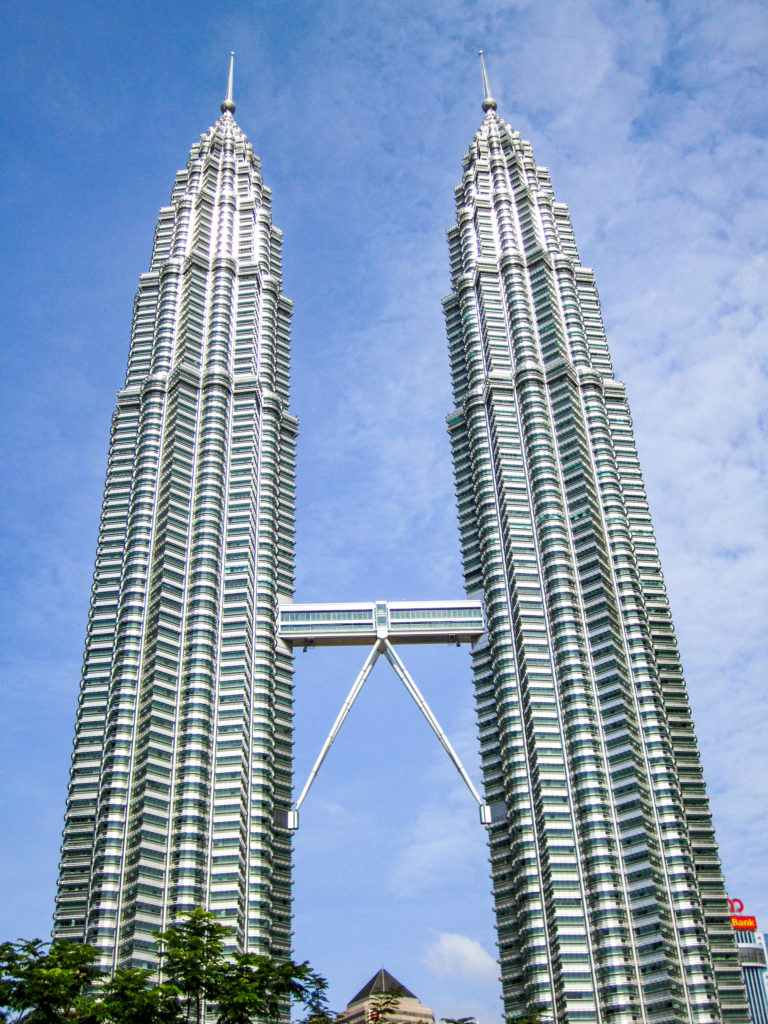
The iconic Petronas Towers
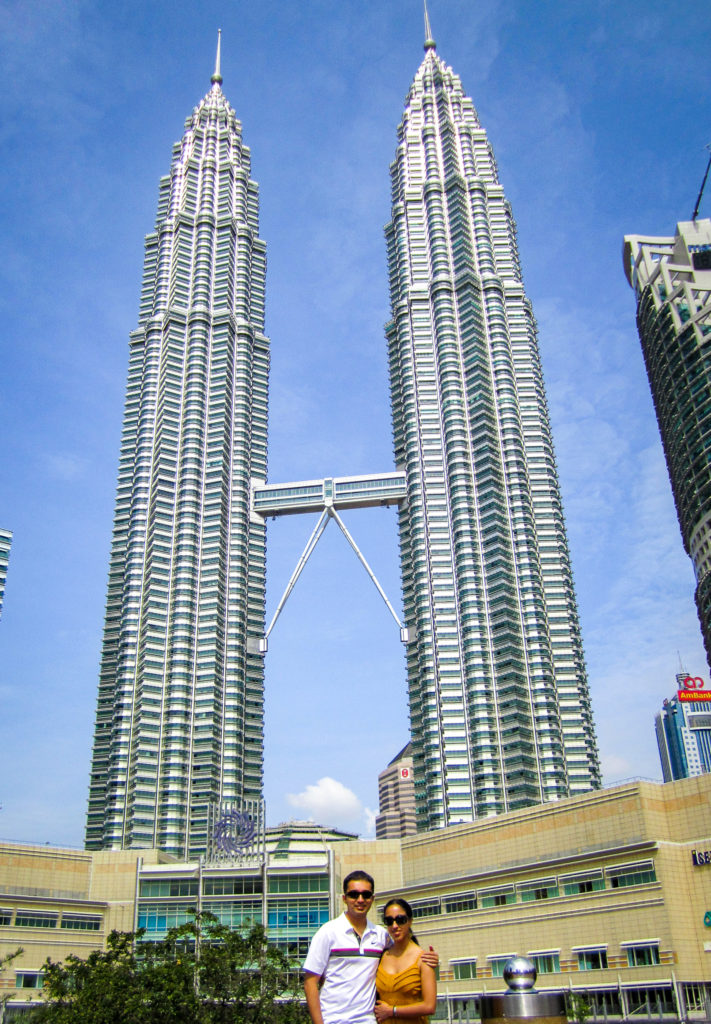
The Towers seemingly perched atop Suria KLCC shopping complex
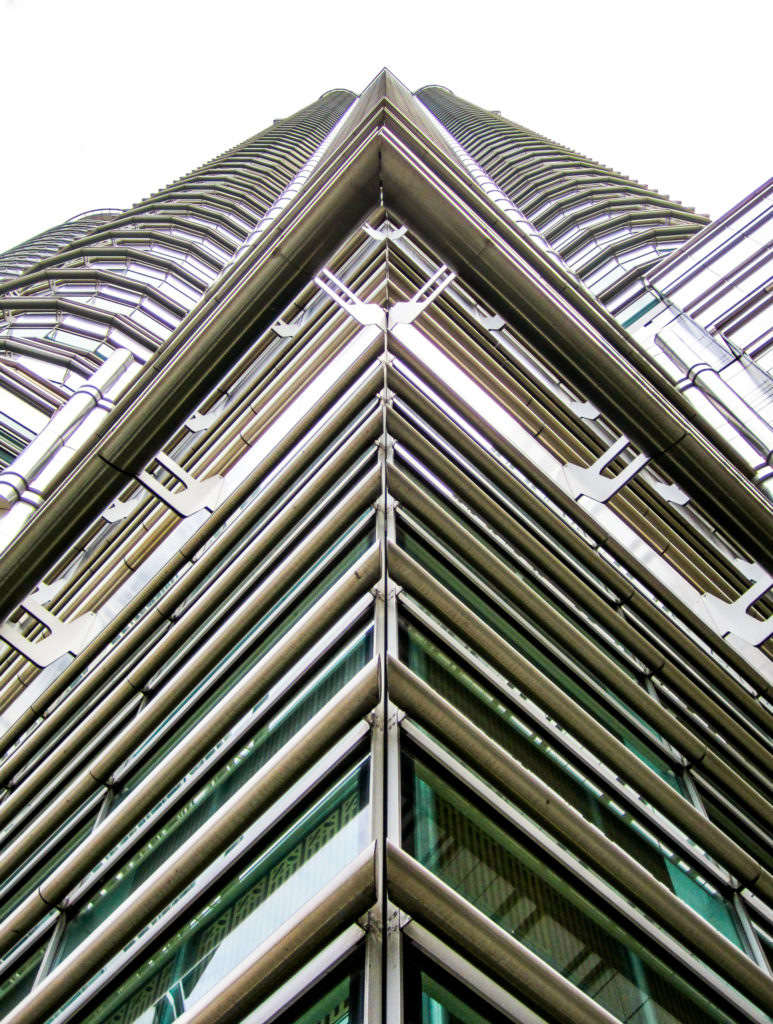
All menacing steel and glass up close
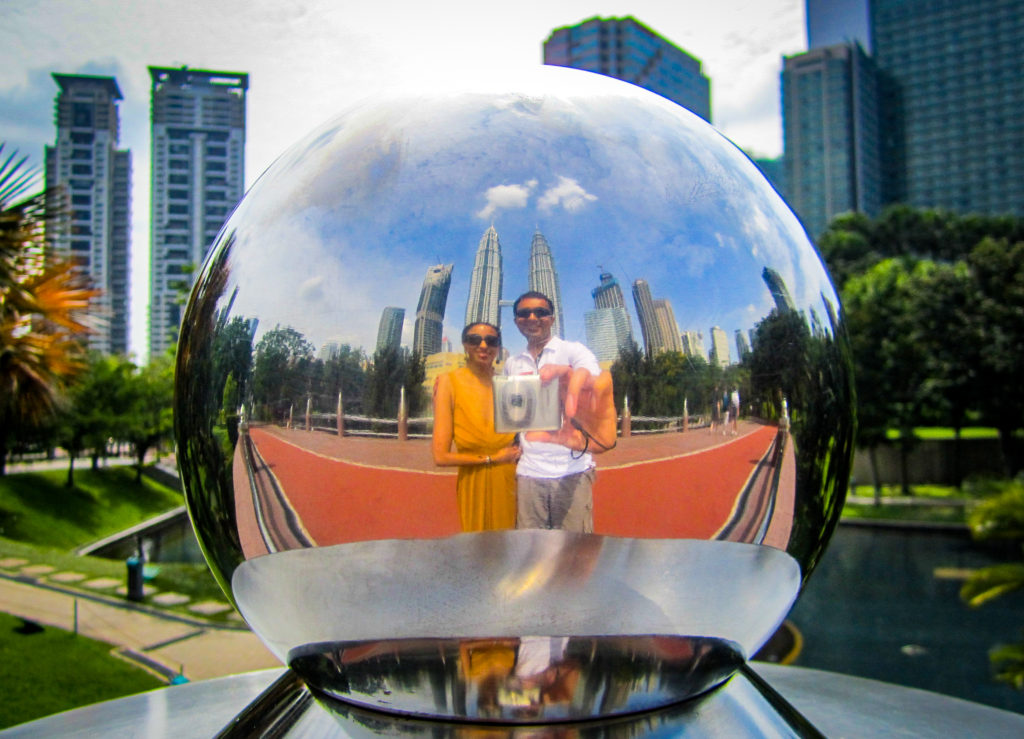
Getting creative with our selfie taking
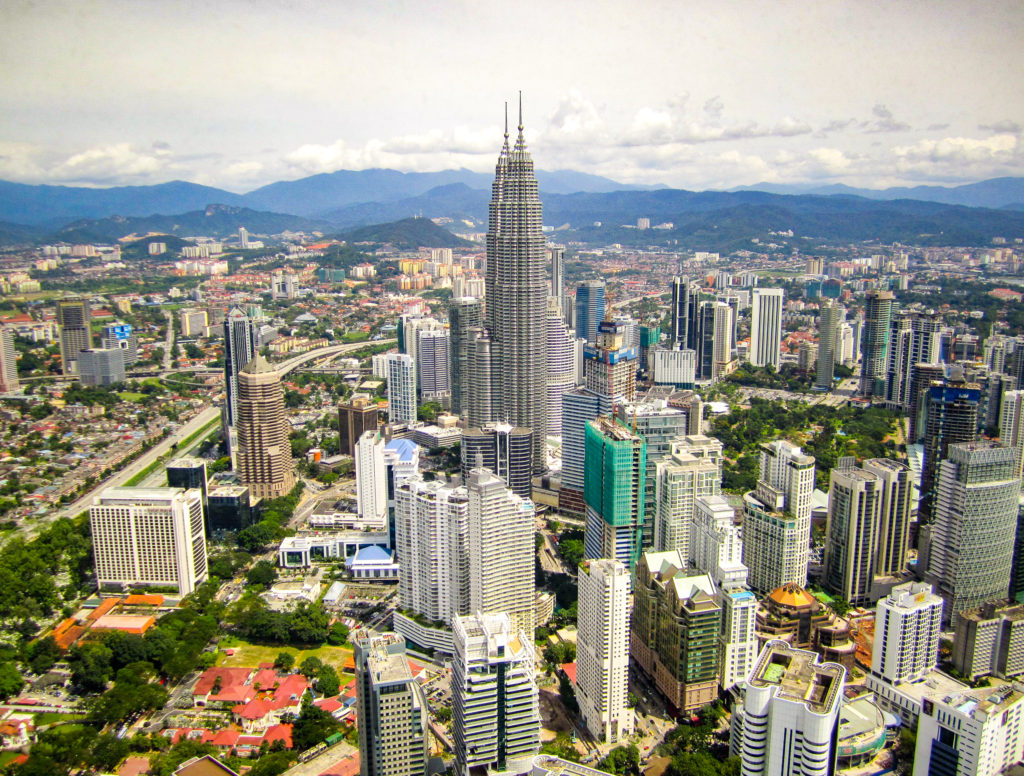
View of Petronas Towers from the nearby KL Tower
Angkor Wat, Cambodia
The massive temple complex of Angkor Wat is the most recognizable symbol of Cambodia, and the main temple’s facade even adorns the national flag. Located on the outskirts of Siem Reap in Cambodia, Angkor Wat is the largest religious structure in the world. This grand symmetrical masterpiece in stone was built to honor the Hindu God Vishnu by Khmer King Suryavarman II in the early 12th century. Although later converted to a Buddhist complex, there are numerous bas reliefs in stone here depicting scenes from Hindu mythology as well intricate carved representations of Apsaras (Nymphs), Devas (Gods) and Danavs (Demons).
There is so much to see, that the best way to avoid temple fatigue is to just focus on a few temples, and take your time savoring their treasures in detail. The main attraction is the Angkor Wat itself – a literal representation of heaven on earth, meant to show Mt Meru, the celestial abode of Hindu Gods in all its grandeur. Other must see temples include the ruins of Ta Prohm, where the jungle is claiming back the temples with gnarly and massive banyan tree roots seemingly devouring the stone facades. Don’t pass up some face time with the countless benevolent Buddha heads gazing down serenely at the Bayon. For some of the best stone carvings in Angkor head to Banteay Srei, a temple dedicated to Shiva, with elaborate and delicate decorations hewn into pink sandstone.
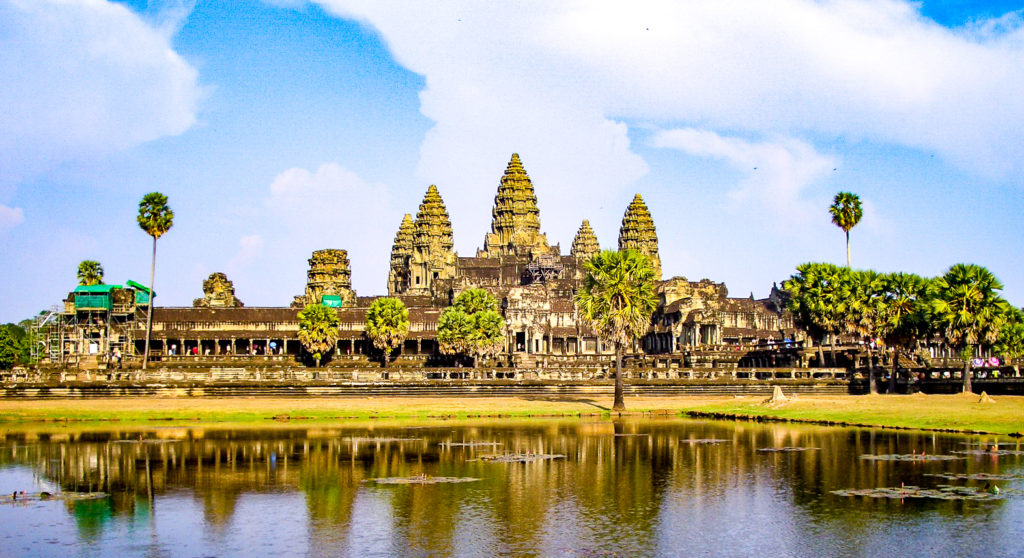
The grandeur of Angkor Wat
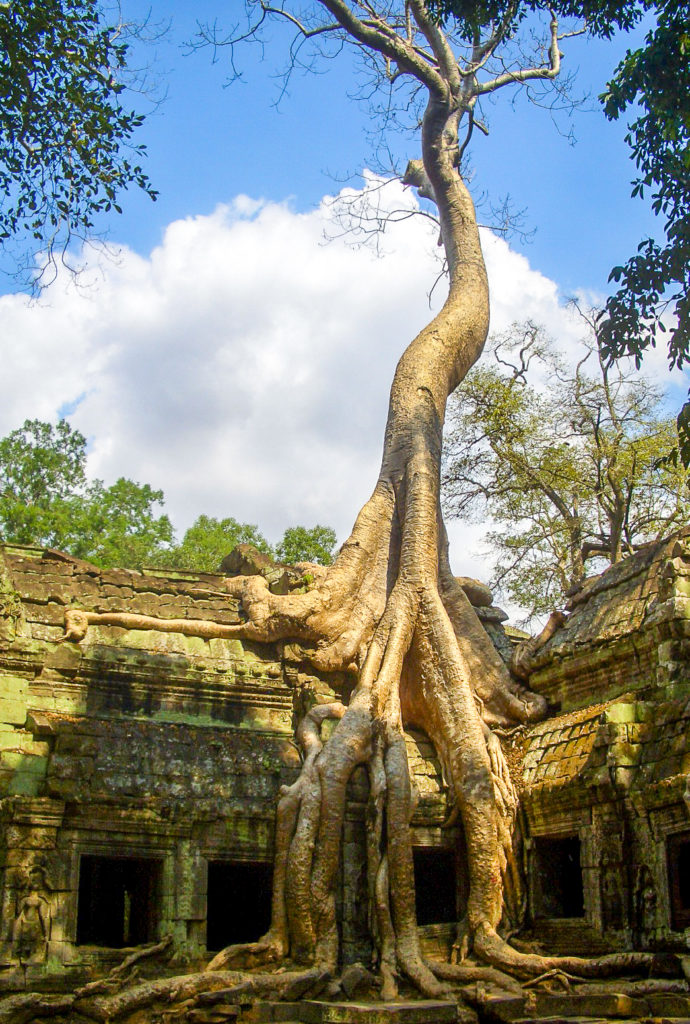
Banyan trees devouring the ruins of Ta Prohm
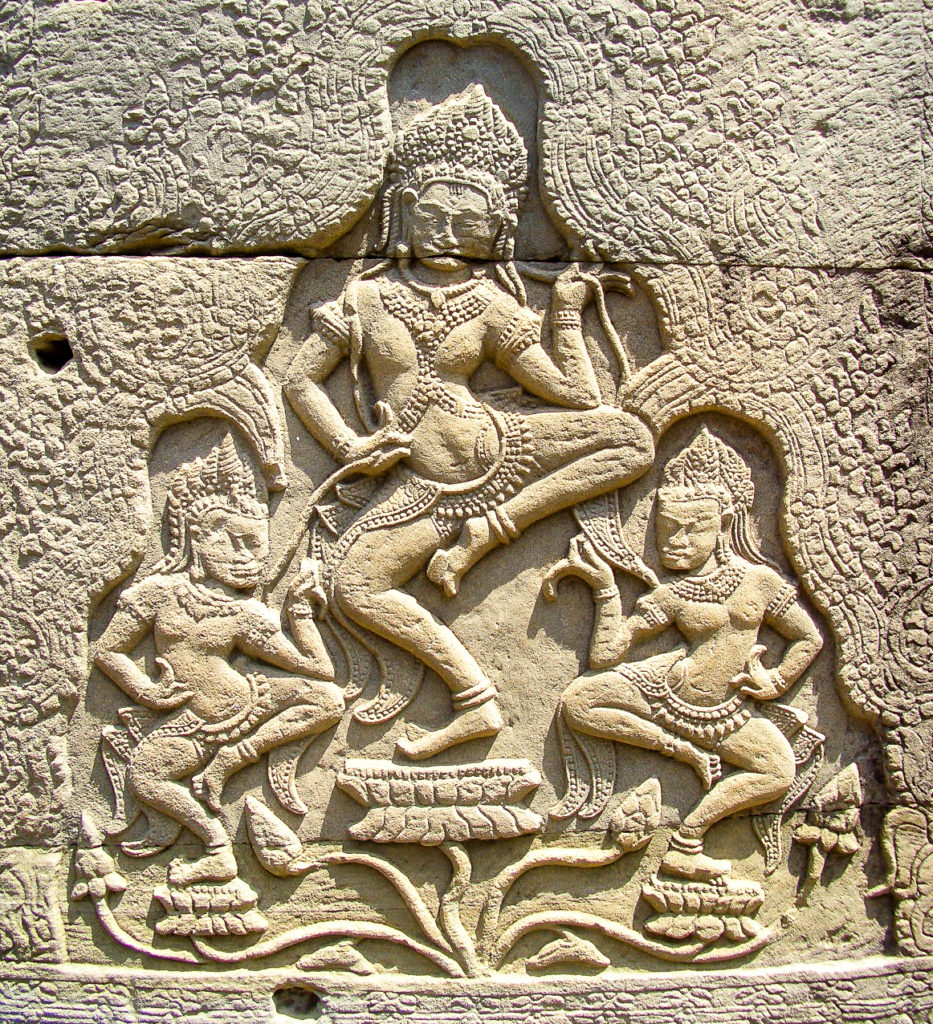
Stone carvings of Apsaras
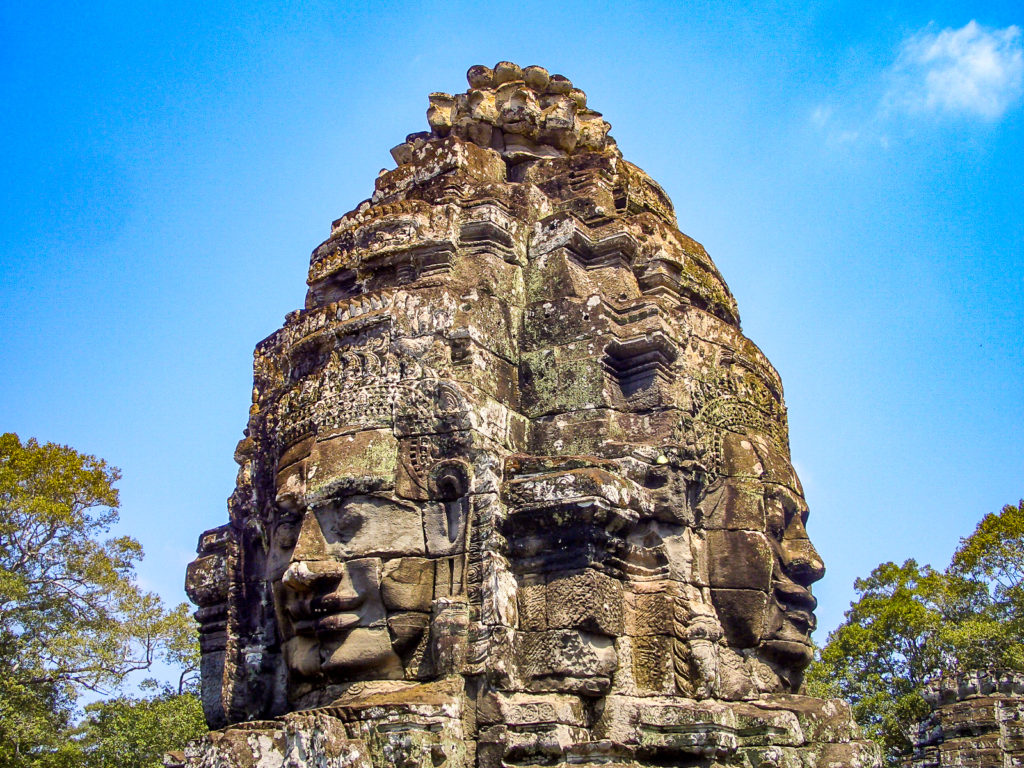
Serene Buddha heads of The Bayon
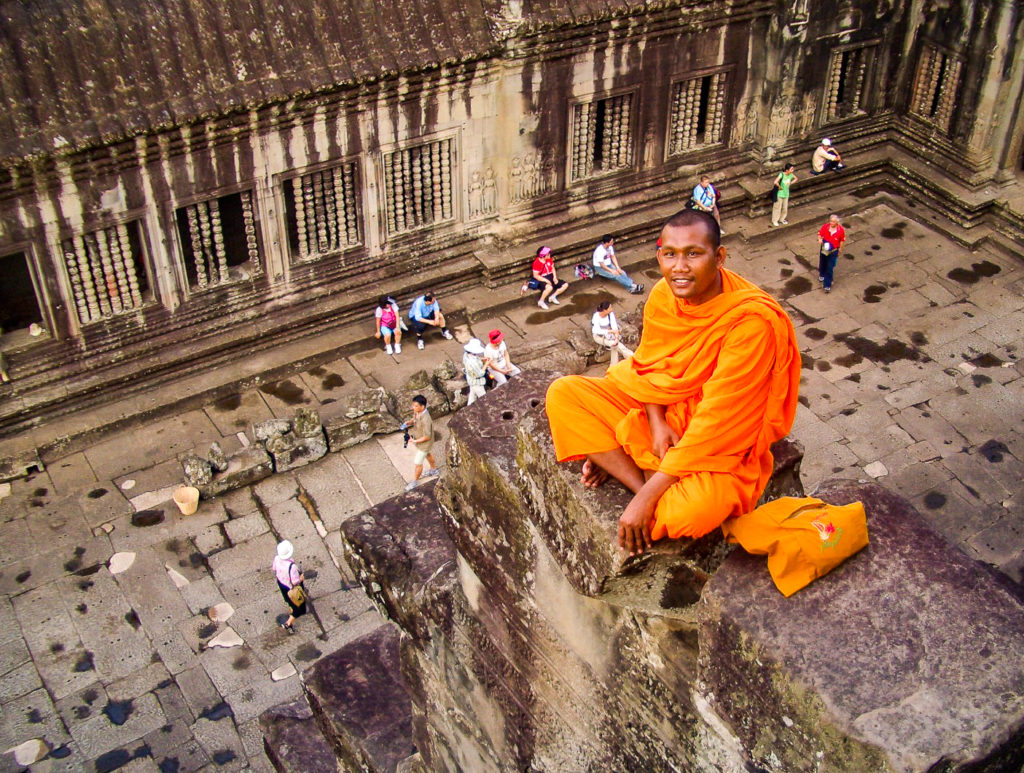
Looks like this seemingly floating monk already achieved nirvana?
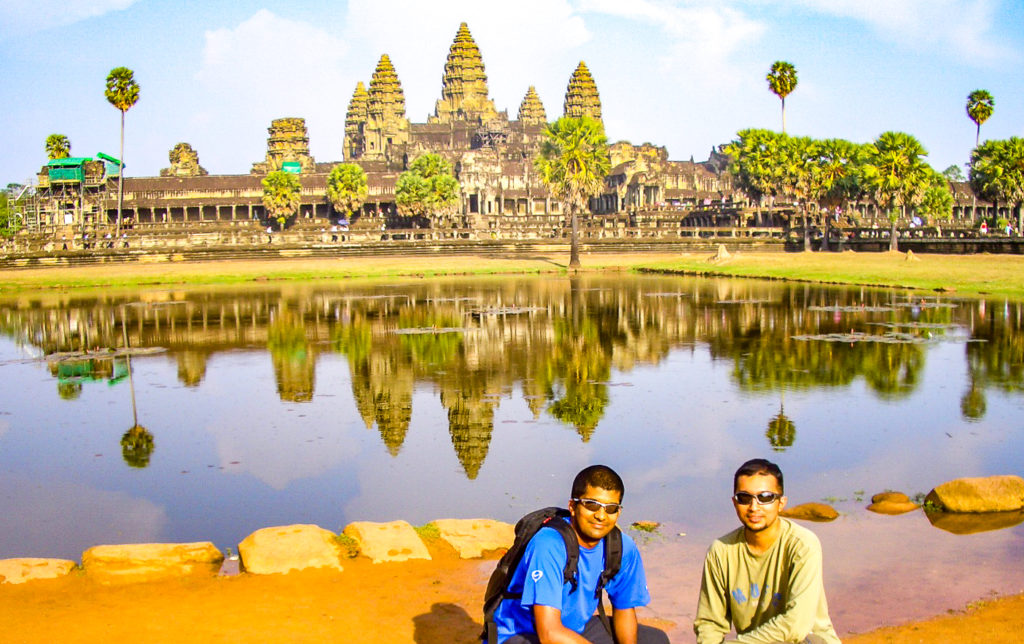
Getting ready to view the sunset at Angkor Wat with my brother
Dubai, UAE
The shining and glitzy Dubai often gets all the plaudits for its atmospheric skyscrapers and shopping Mecca’s – but to savor the true heart and terrain of the UAE, head our into the into the Desert for a authentic Arabian desert experience. Unless you’re a seasoned driver in sandy conditions, your best bet is to book a desert safari and have the experts take care of you.
The desert safari begins with a dune bashing adventure in a 4×4 – we booked ours through Arabian Adventures. Hold on tight as your driver/guide executes one gravity defying maneuver after another up the sand dunes, followed by roller coaster style drops that will have your stomach in your throat. After that adrenaline rush you could opt for an altogether different type of ride, a shock absorber free ride atop a desert camel as it saunters lazily across the dunes. As the evening progresses, get comfortable on this hump back vantage point to watch the setting suns rays cast hypnotic shadows across miles of undulating desert sand dunes. Wrap up your desert safari adventure in a Bedouin camp – lounging back on comfy pillows, taking deep breaths of a sheesha pipe, and imbibing some delicious barbecue and Arabic delicacies.
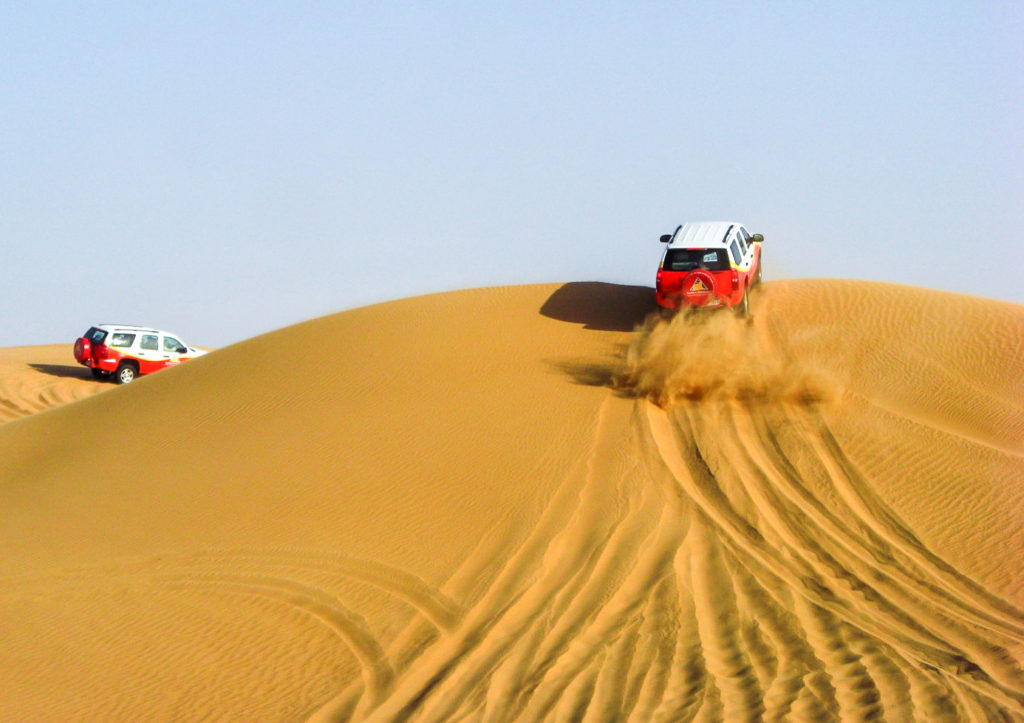
Up Up…
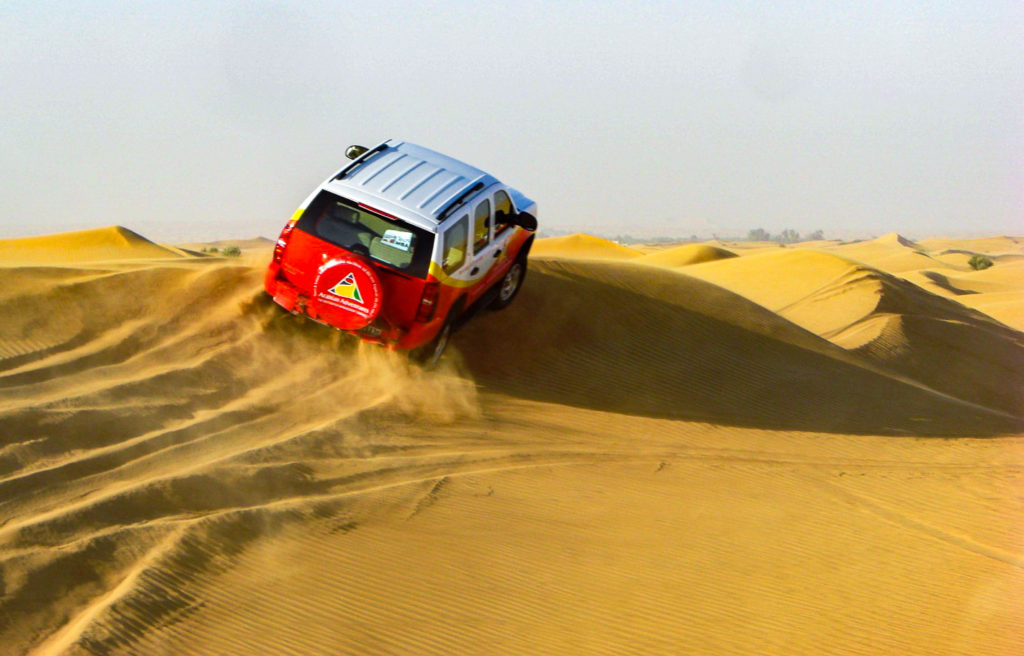
…and away…
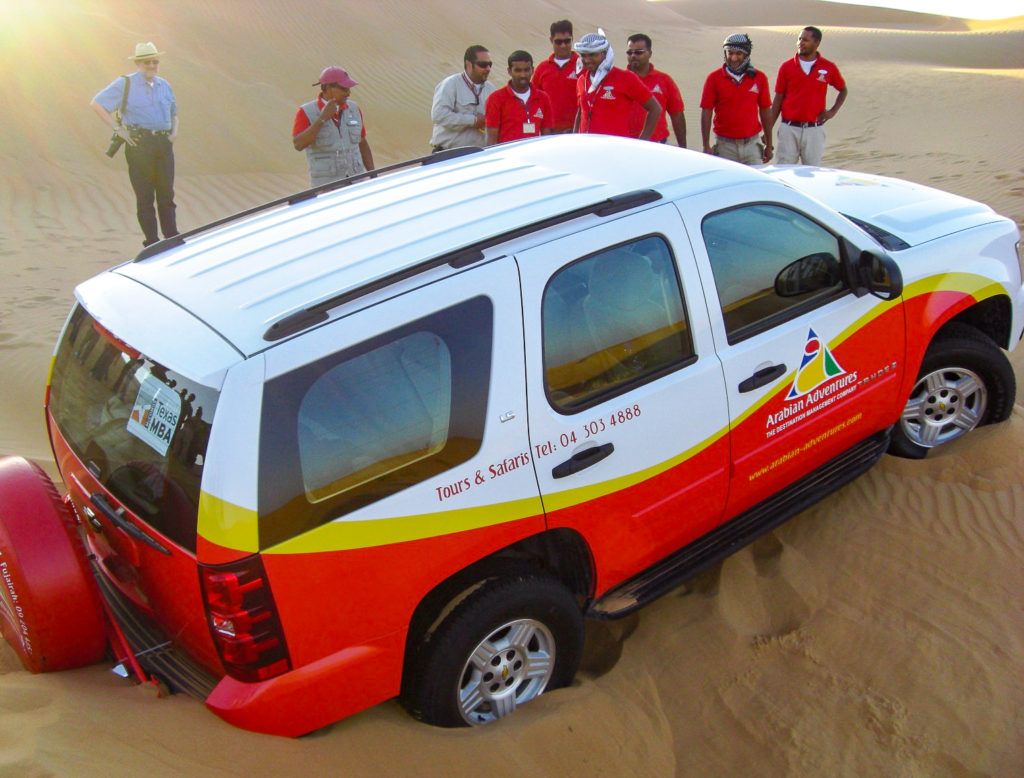
…till you get stuck
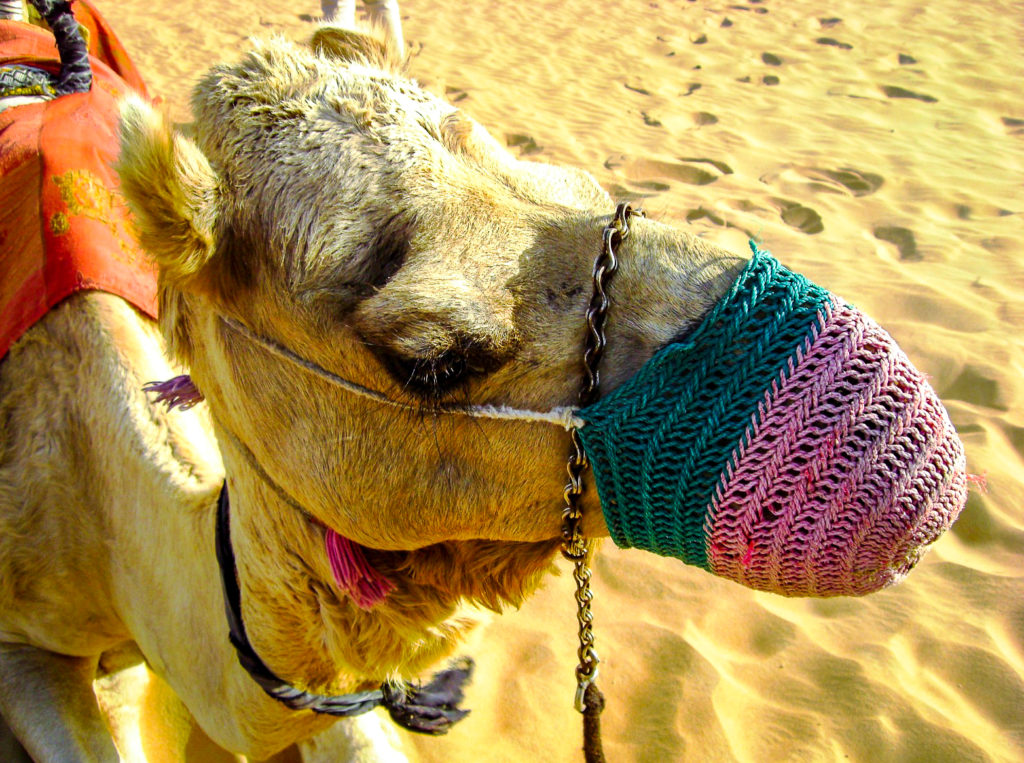
This guys breath stank even though he was muzzled
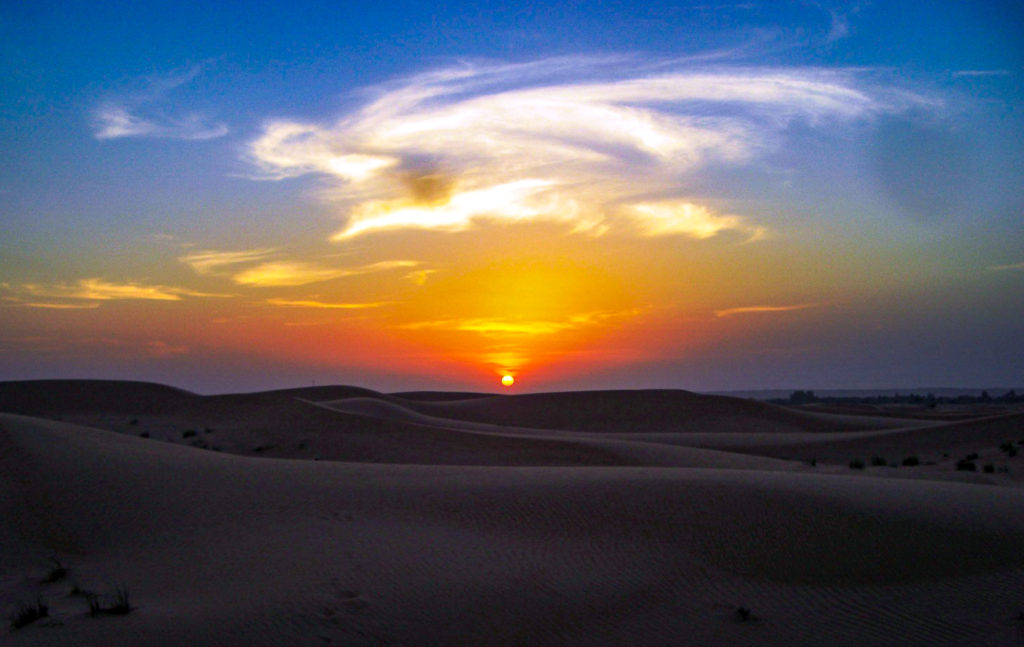
Mesmerizing sunset over the dunes
Great Wall, China
The Great Wall of China has been designated as one of the New 7 Wonders of the World, and rightfully so, since this UNESCO World Heritage architectural marvel is the longest man made structure on earth. Actually a collection of various fortification walls built by different groups starting from the 7th century BC, much of what remains of the Great Wall today was built during the Ming Dynasty. The wall stretches along at over 21,196km across the vast breadth of what was China’s historical border, and was initially built to repel would be invaders such as the Mongols from the north (it didn’t work).
We took advantage of a long layover in Beijing to make a half-day excursion to the Mutianyu section of the wall, a little over an hour drive from the airport. The Mutianyu part is one of the best preserved sections of the Great Wall, and would usually be teeming with invading hordes of tourists. Luckily we were visiting in the low winter season and in the early hours of the morning, so we ended up having most of the wall to ourselves. Unfortunately though, since it was late Dec the elevated walls were shrouded in fog and didn’t afford us the opportunity to spy far into the distance across the steep winding hills and forested terrain. The overcast conditions did make for quite an ambience though – giving us a view of what it must’ve been like for solitary guards manning the many regularly spaced watchtowers, spending lonely winter days squinting into the fog below while on the lookout for potential attacks.
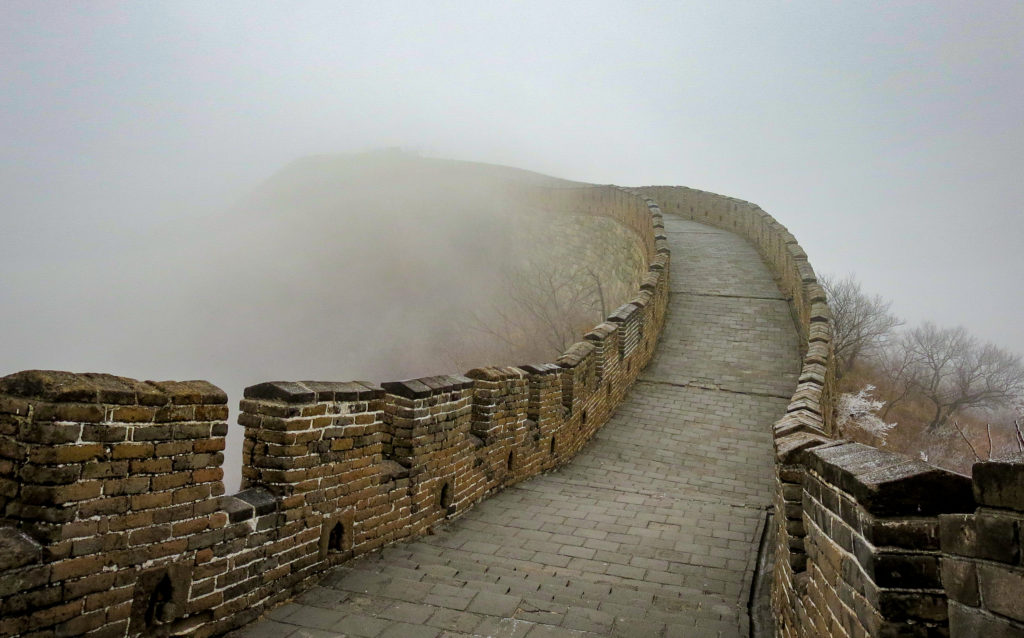
The Great Wall of China shrouded in morning fog
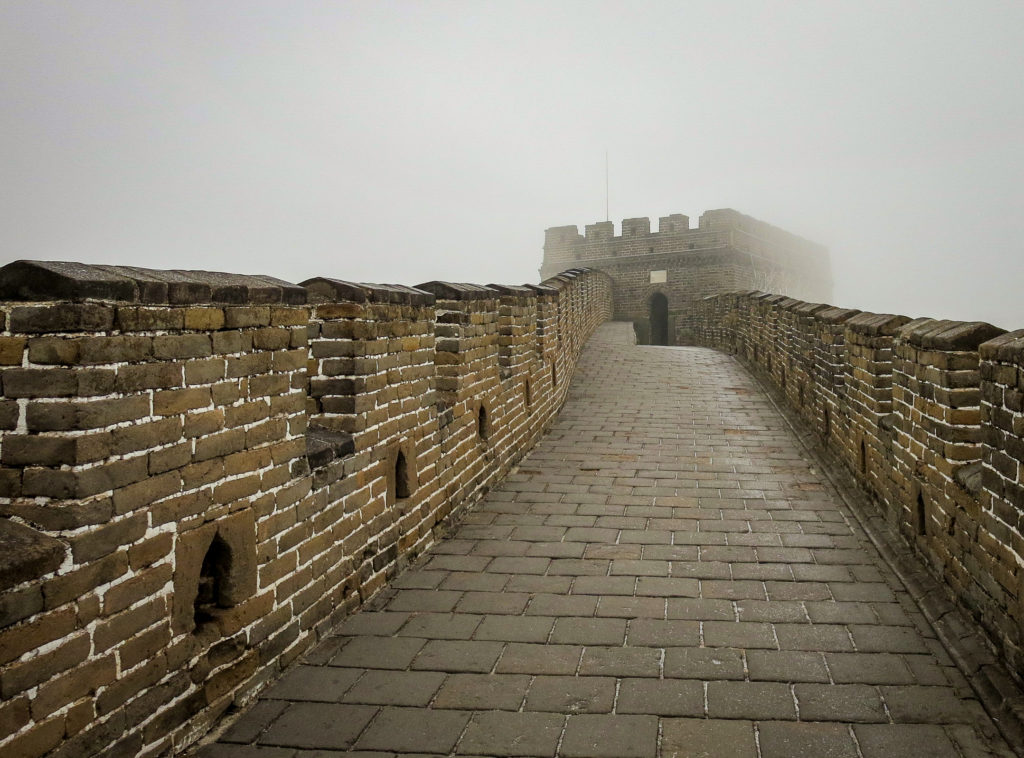
Heading to one of the watchtowers
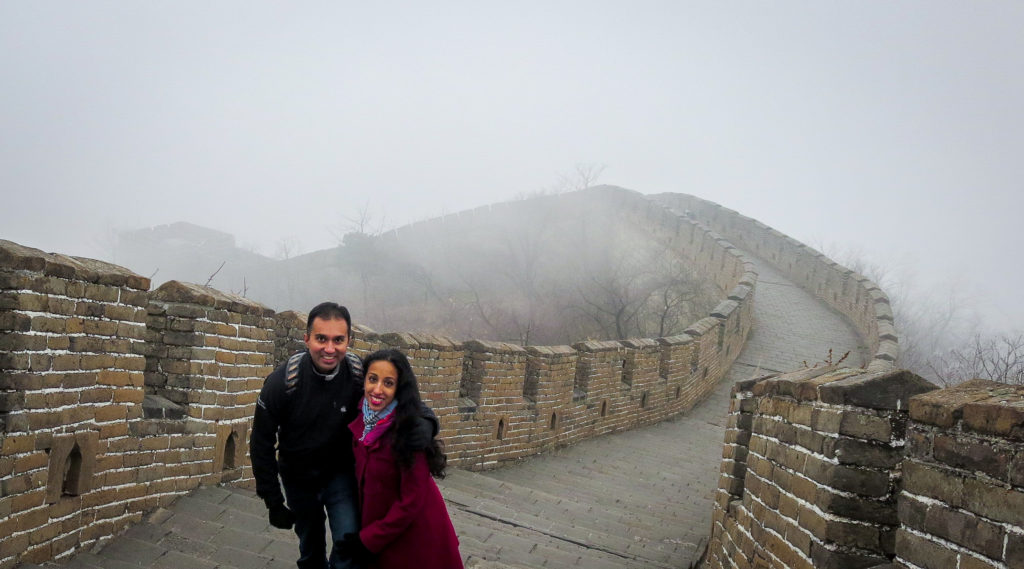
We had the wall all to ourselves in the early morning
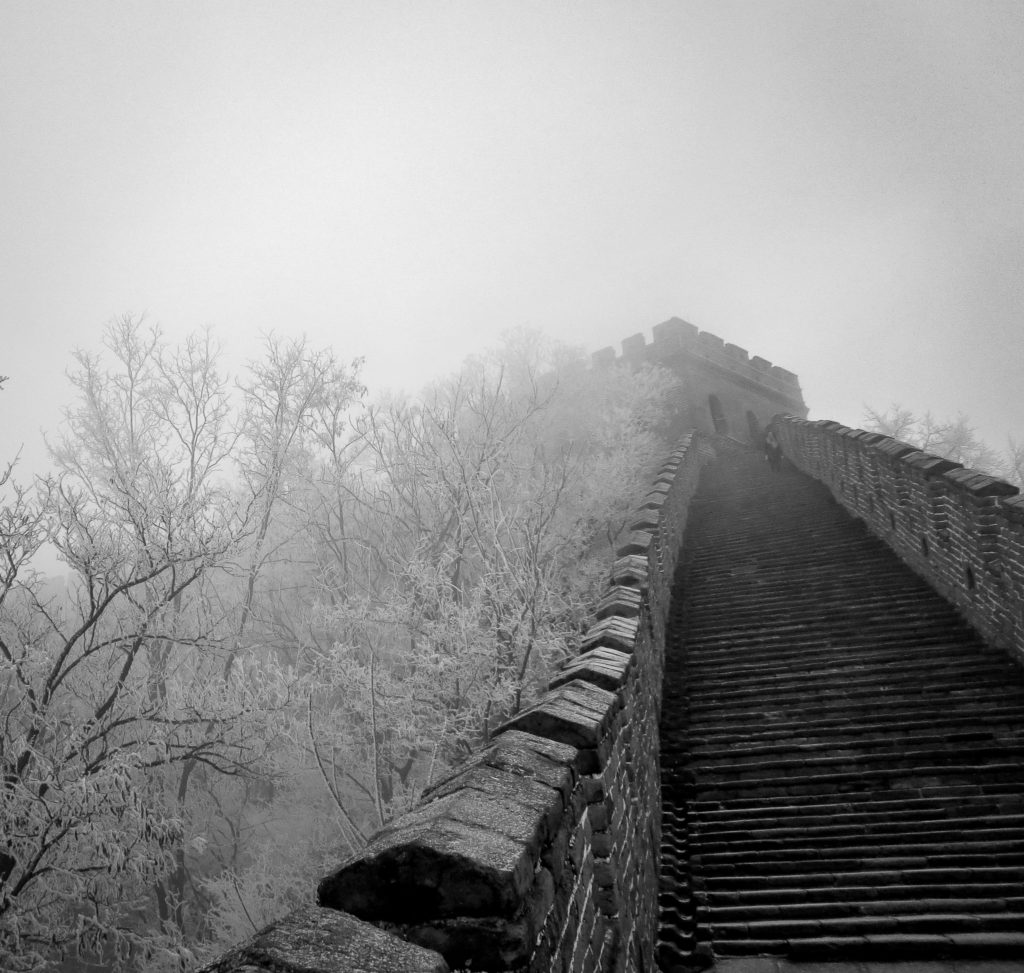
Eerie climb into a fog entrenched watchtower
Qutb Minar, Delhi
The Qutb Minar is the prime jewel within its namesake complex in the Mehrauli area of Delhi. The construction of the complex was started by Qutb-Ud-Din-Aibak (founder of the Delhi Sultanate) in the late 12th century as a victory tower to commemorate the vanquishing of the Rajput Jains. This marked the start of the Mamluk dynasty, and subsequent Muslim rule by various dynasties in India for the next 7 centuries.
The Qutb Minar tower, Quwwat-Ul-Islam mosque, Alai Darwaza grand entrance, and Mauryan era iron pillar are the main attractions within this UNESCO World Heritage status site. The tower is 73m tall and consists of 5 distinct levels of red sandstone and white marble which were added at various times. Qutb-Ud-Din-Aibak only managed to complete the 1st level before his death, and subsequent levels were added by his successors Iltutmish and Firozshah Tughlaq. The tower is thought to be modeled after the Minaret of Jam in Afghanistan, where the Mamluks hailed from. The Quwwat-ul-Islam (or Might of Islam) mosque was the first mosque built in Delhi and is almost a prototype for future Indo-Islamic mosque architecture. It is believed to have been built on the site of a prior Hindu temple, using materials plundered from numerous other temples – evidenced by the elaborate decorations and illustrations of human figurines adorning the pillars and walls, depictions that are usually forbidden in Islamic architecture.
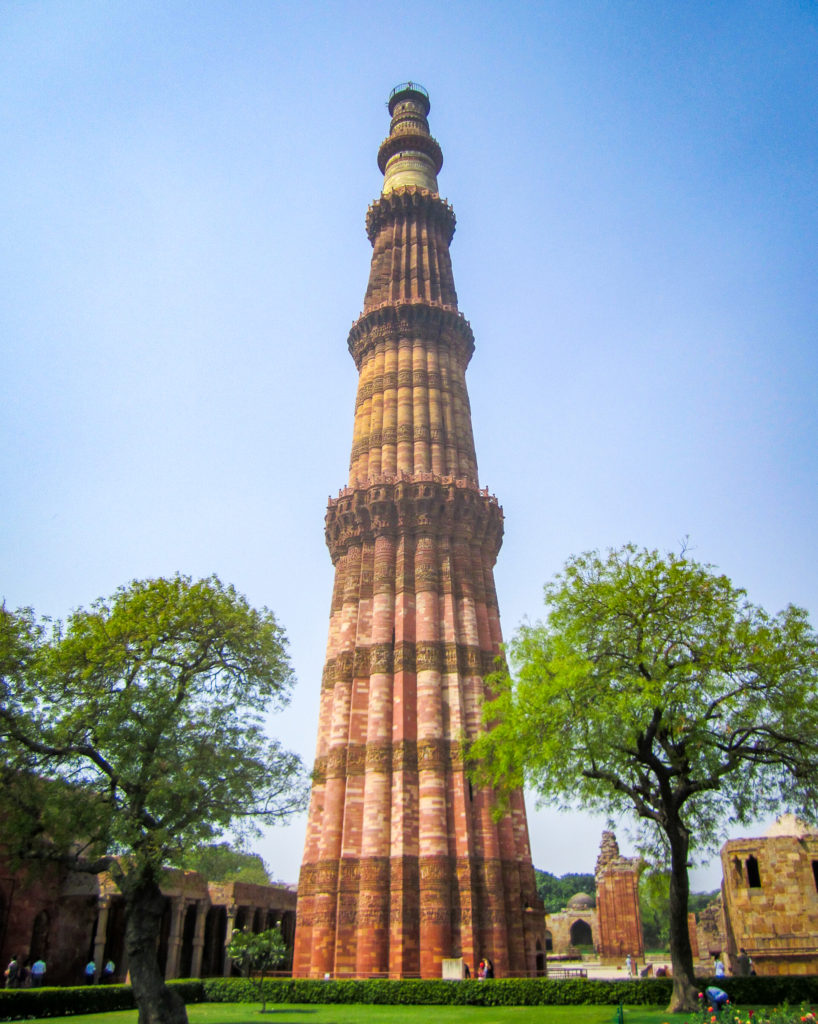
The towering Qutab Minar in Delhi
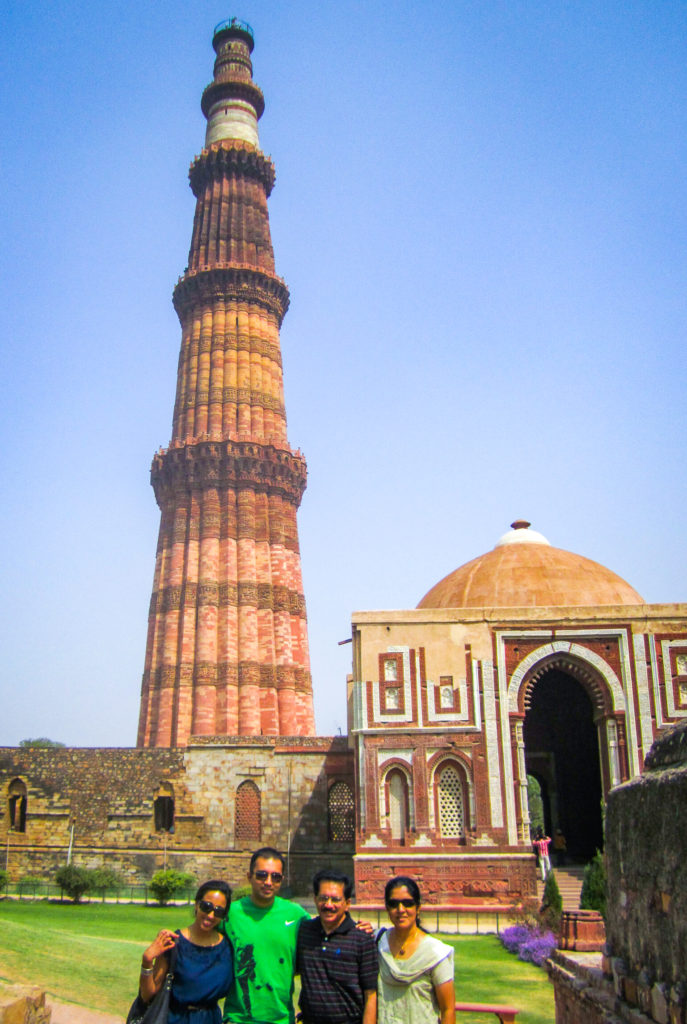
Family pic with my parents against the backdrop of Qutab Minar and Alai Darwaza
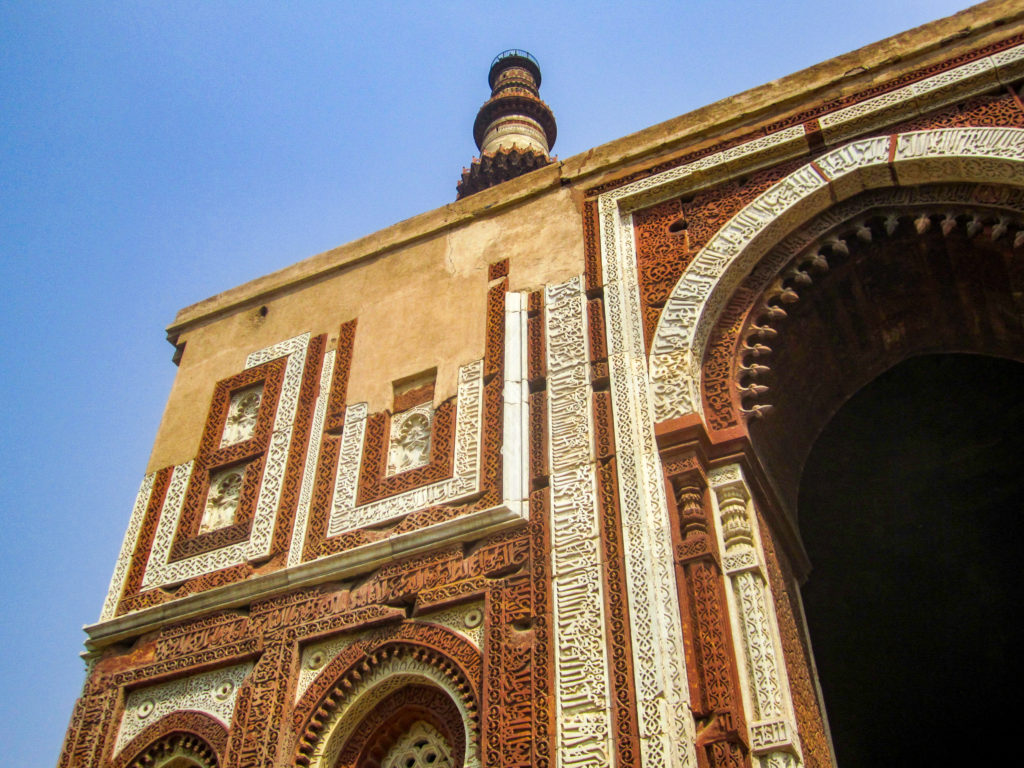
Alai Darwaza grand entrance up close
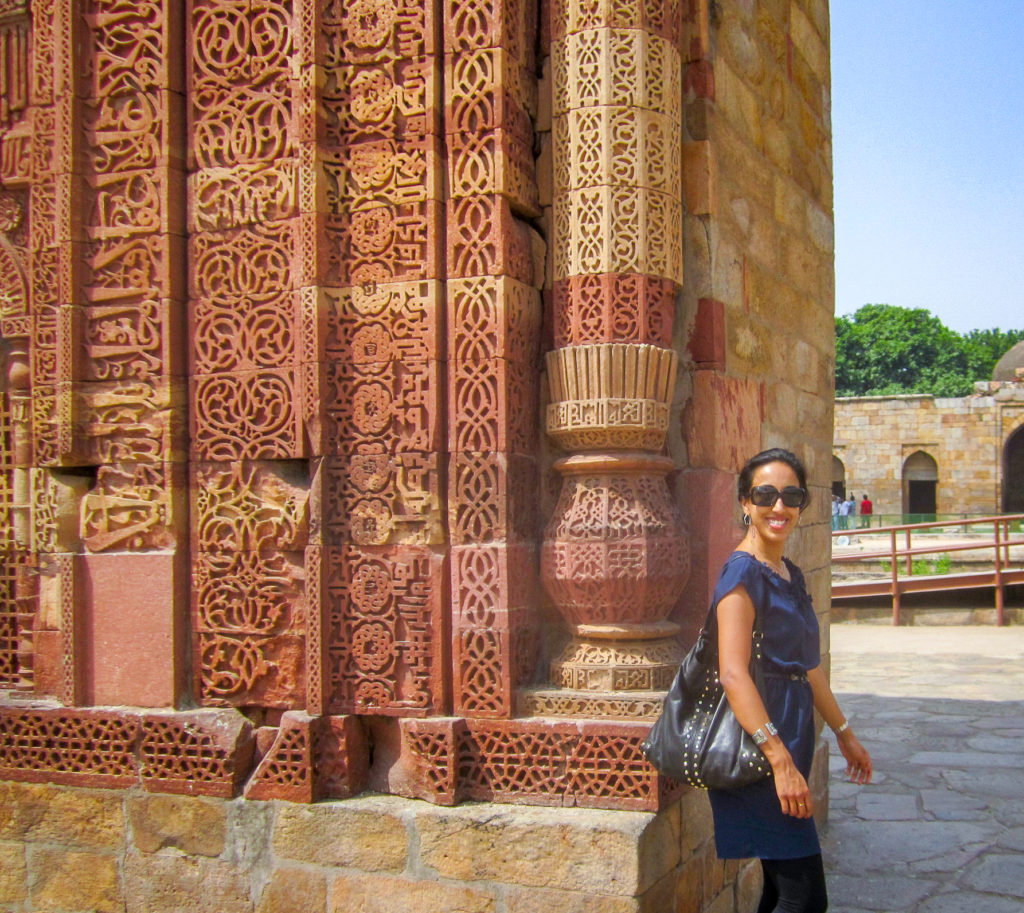
Checking out the intricately carved geometric designs and Arabic quotes on the tower walls
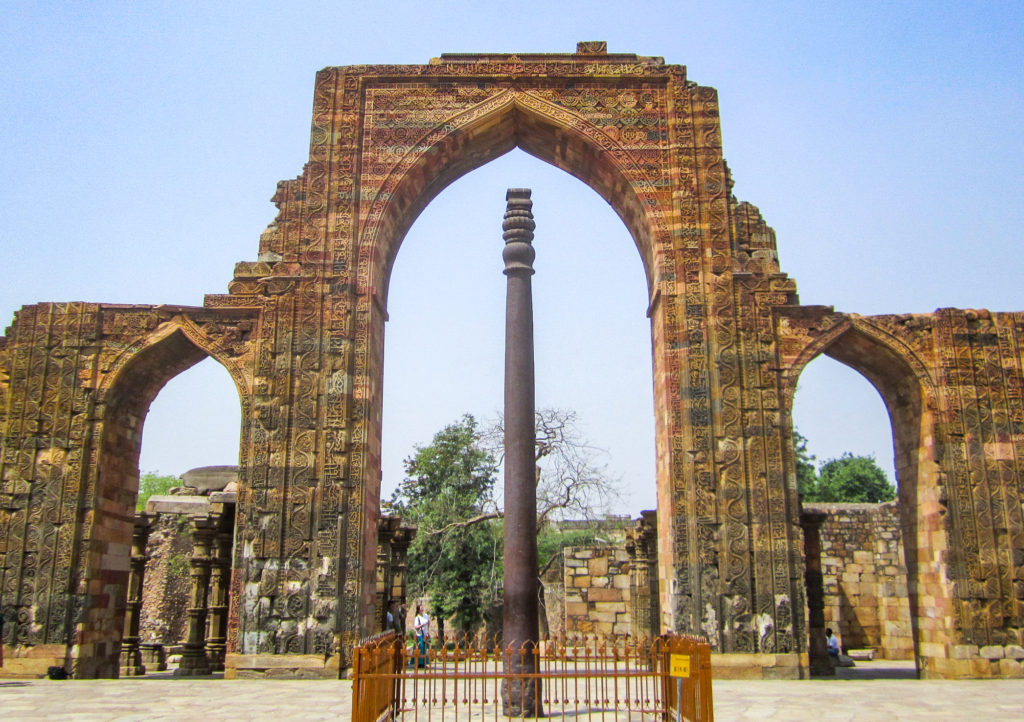
Remants of the Quwwat-Ul-Islam Mosque, and the Mauryan era Iron pillar that supposedly brings good fortune to those who encircle it with the arms backwards…
Bali, Indonesia
The tropical paradise of Bali is the most visited destination among the thousands of islands that make up the Indonesian archipelago. Just the name Bali often conjures up exotic visions of lush green forests, terraced paddy fields, miles of sandy beaches and stunning sunsets across the Indian Ocean. The people, culture and traditions of this devout Hindu island further sharpen the contrast with the rest of predominantly Muslim Indonesia. Throw in its rich cultural heritage, unique architecture, mouth watering cuisine, artisanal handicrafts, and focus on wellbeing – and it starts to make sense why Bali is often called the ‘Island of the Gods’.
In Bali you could be snorkeling in crystal clear coral reefs one moment, then transported to a Hindu ceremony in an ancient temple next, or find yourself hiking up a volcanic mountain in the lush tropical jungle. If you’re feeling adventurous then try battling away handsy macaque monkeys at Uluwatu’s cliff side temple, while waiting to watch the sunset ’Kecak’ fire dance. At the end of a thing day of exploring you could either strive to find inner nirvana via an authentic Balinese massage in local spa in Ubud, or maybe you would prefer to party the night away at one of the many world famous beach clubs of Kuta. If your money is in a rush to exit your wallet, then rest assured that there are plenty of skillfully crafted sculptures, rich tapestried paintings, antique furniture, and even Luwak coffee (beans pooped out by Civet cats) to take home as fair exchange.
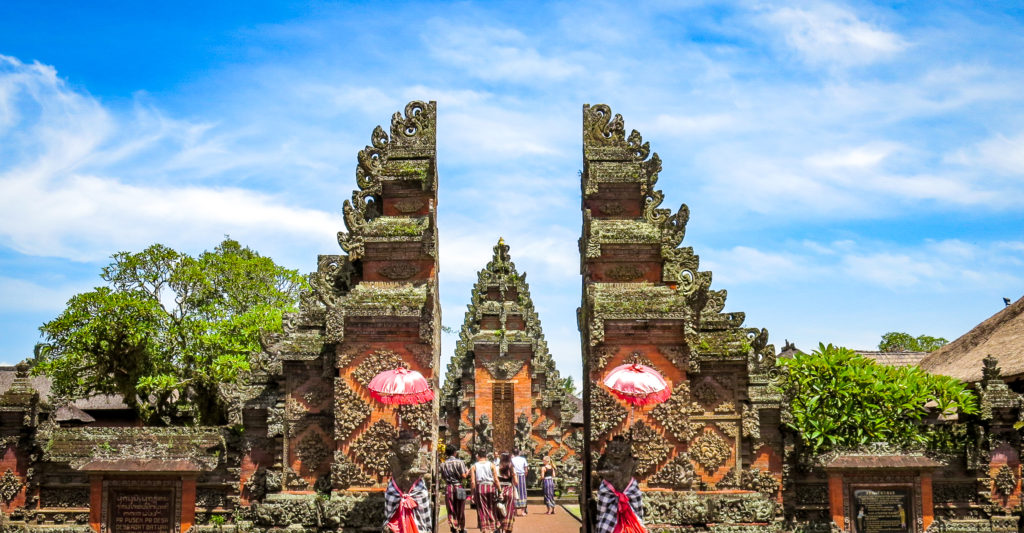
Example of the distinctive split gates of Balinese temples, known as Candi Bentar
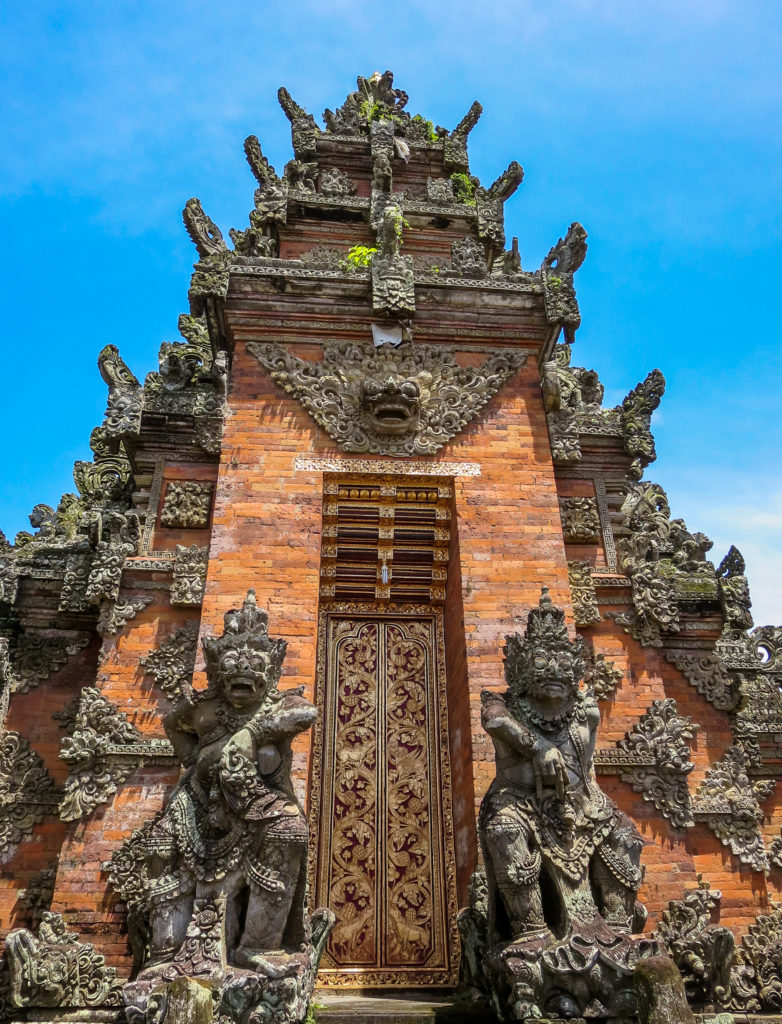
Intricately decorated temple
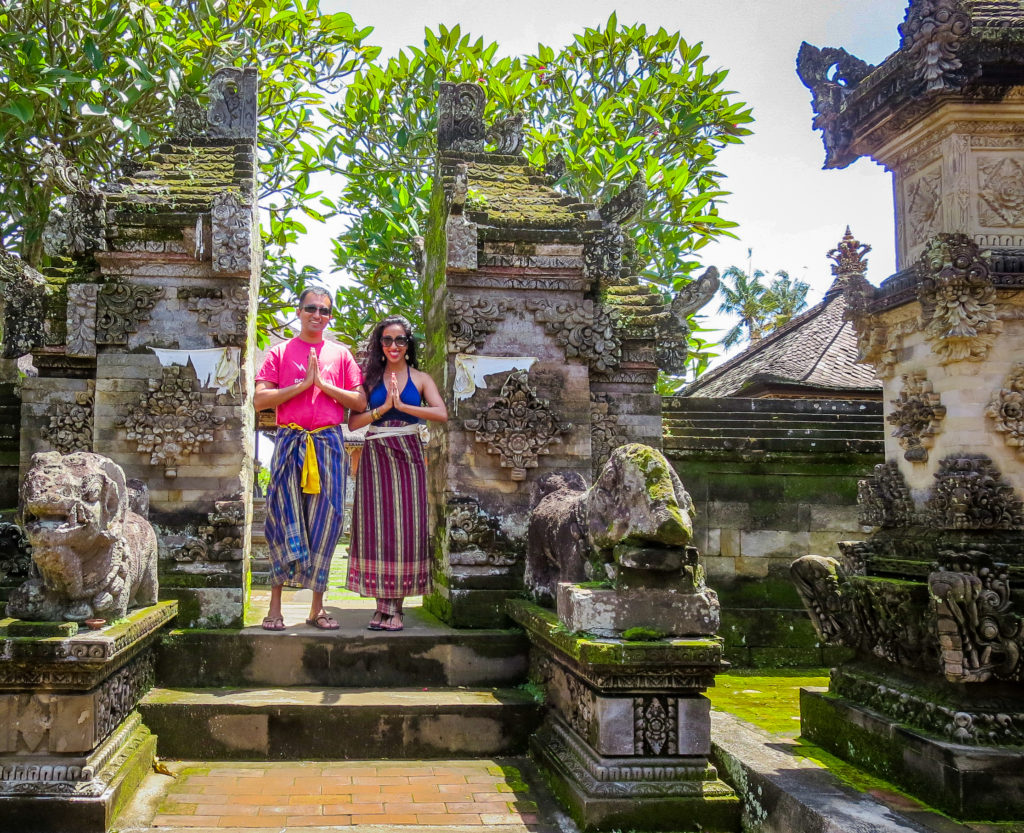
Obligatory temple pose
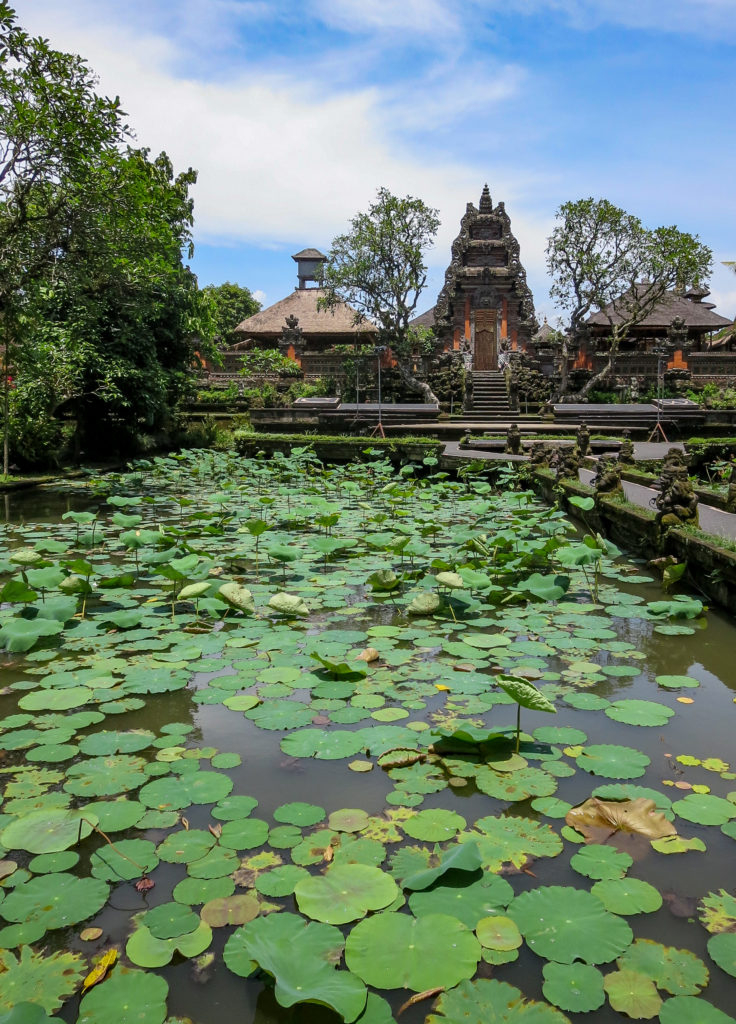
Taman Pura Saraswati Lotus Temple in Ubud
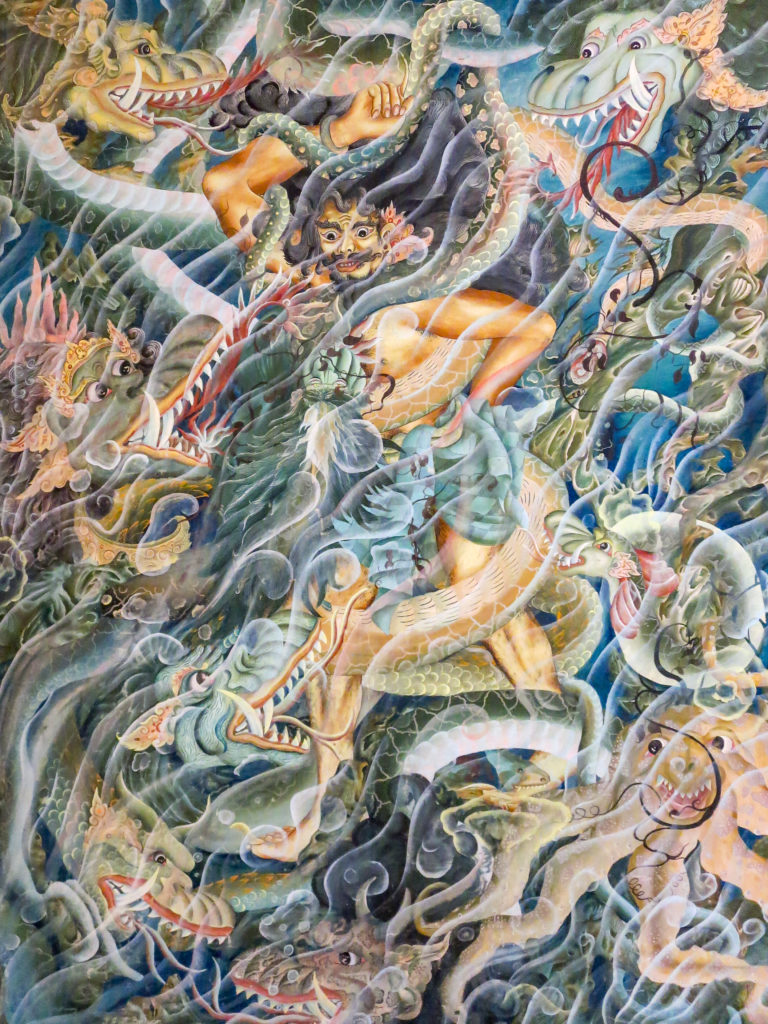
Entangled painting style
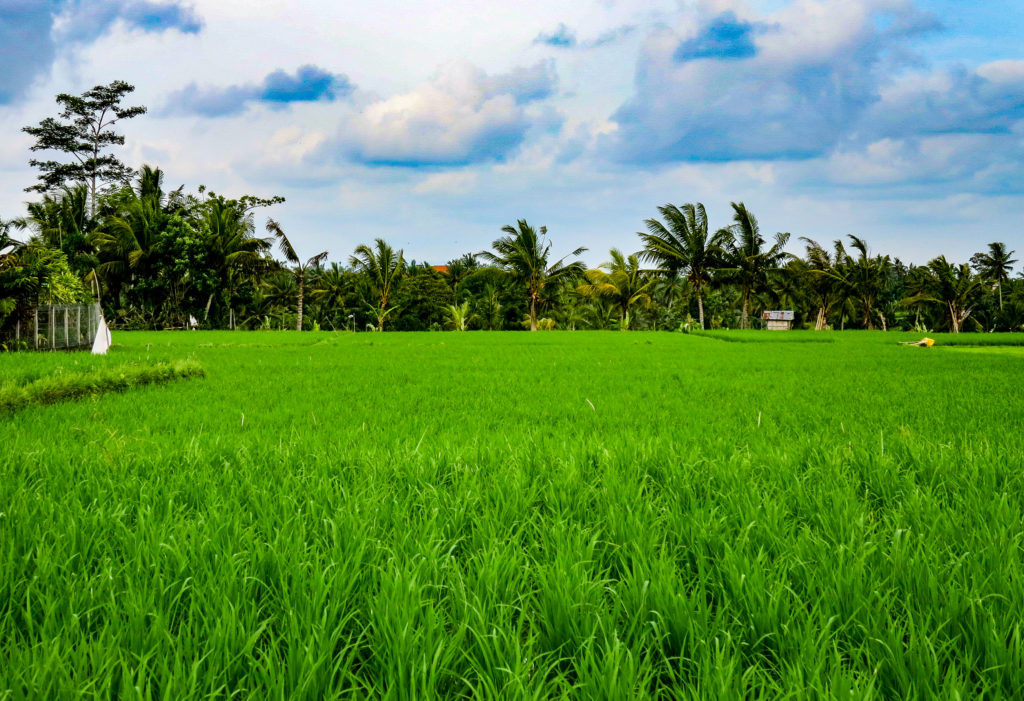
Lush and verdant paddy fields near Ubud
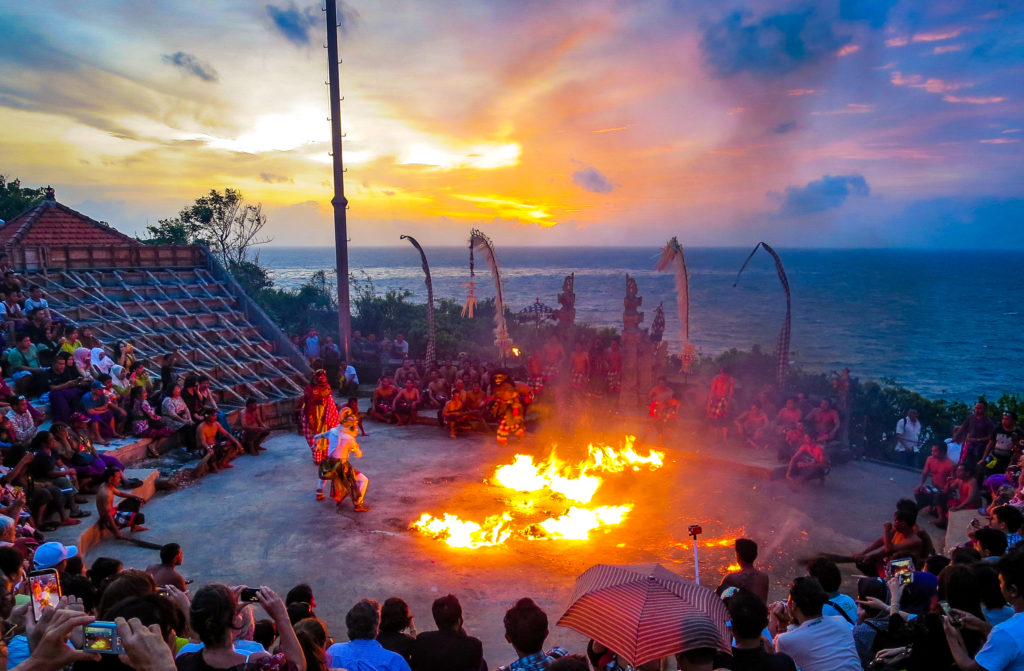
‘Kecak’ fire dance at sunset in Uluwatu Temple
Mui Ne, Vietnam
Most visitors to Ho Chi Minh city (Saigon) limit their explorations within city limits, but for a trip off the beaten track – take a 5 hour bus ride out East to the beach resort town of Mui Ne. This sleepy town is famous for its water sports activities and makes for an easy weekend getaway from HCMC. While in Mui Ne, don’t miss out on the chance to visit it’s famed giant sand dunes.
These massive dunes wouldn’t look out of place in the arid deserts of the Sahara or Namib, and they make for an odd sight on the beaches of Vietnam. The most impressive, and hence most visited, are the Red dunes and the White dunes. These photogenic dunes are best visited at sunrise or sunset, when the soft light and angled sunlight cast some breathtaking shadows across the dunes. If you’re feeling particularly adventurous, try your luck sledding down the sandy dunes. Pro tip – keep your mouth closed while you slide down!
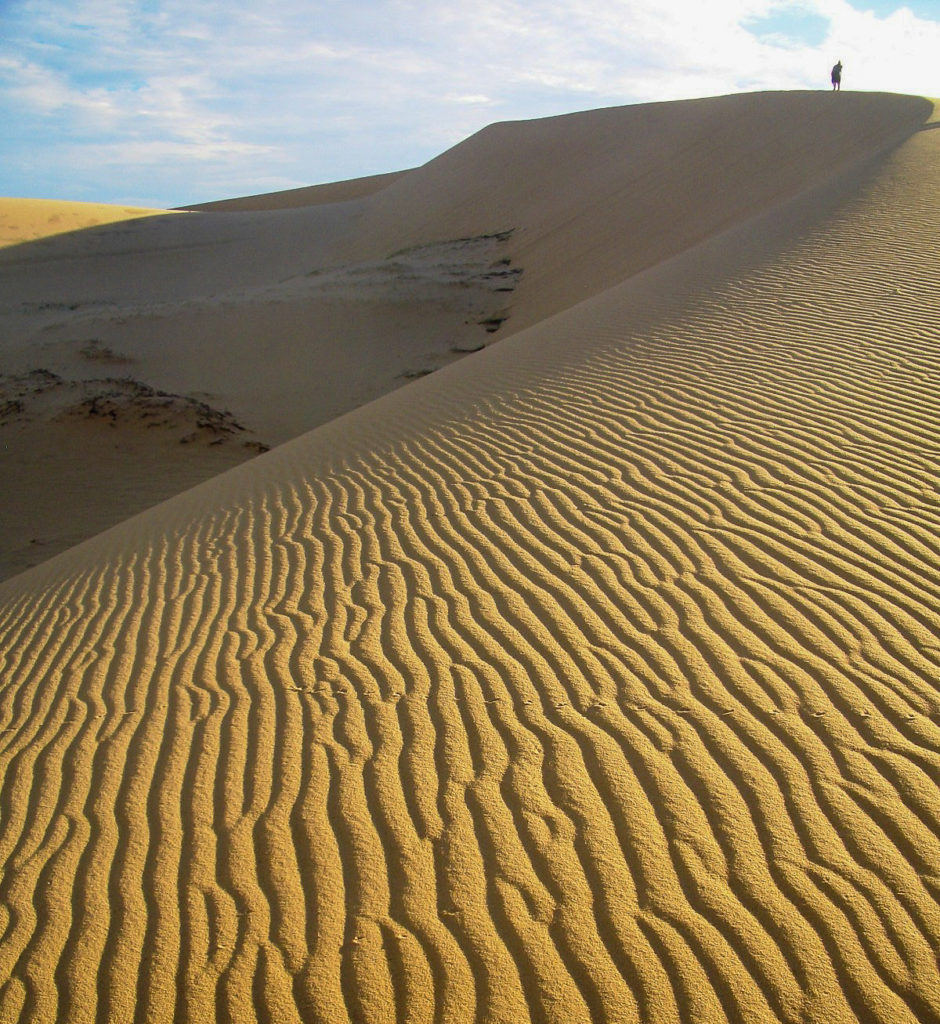
Short hike along the crest of the dunes
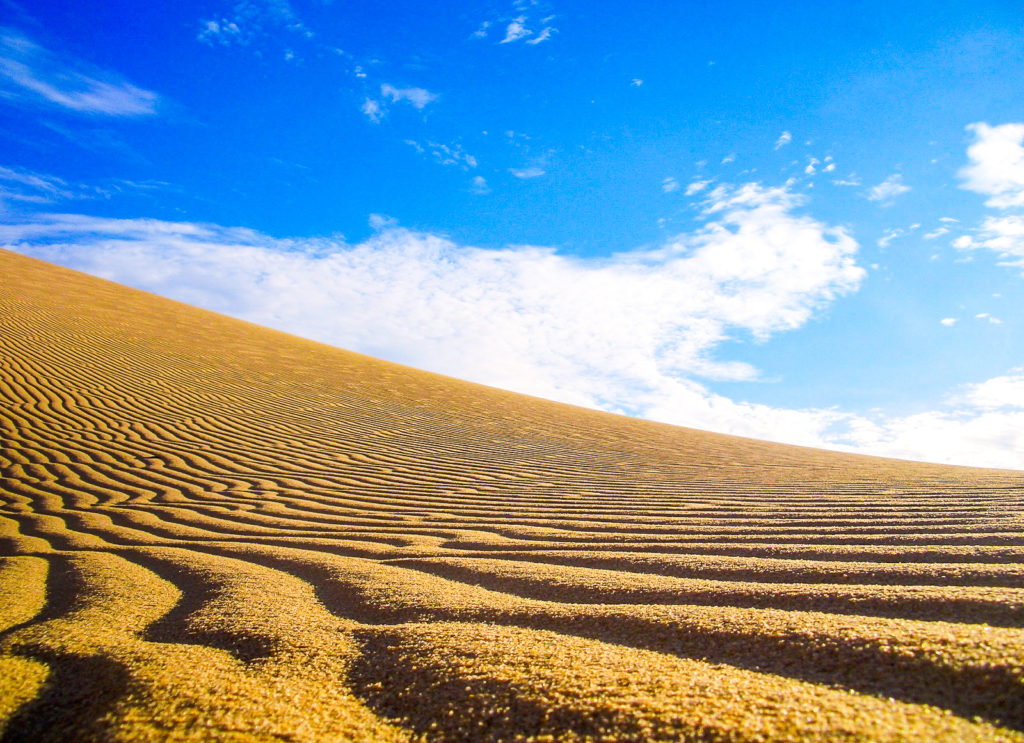
Windblown tracks in the white sand dunes
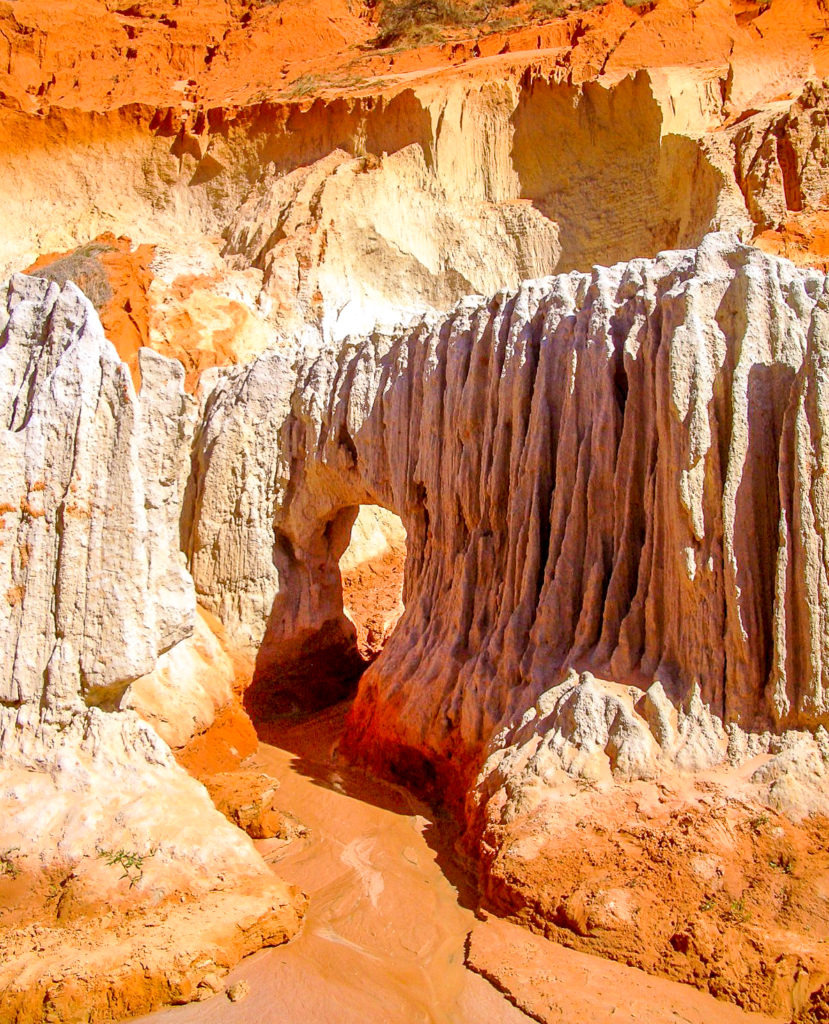
Weathered stone shapes on the way to the red dunes
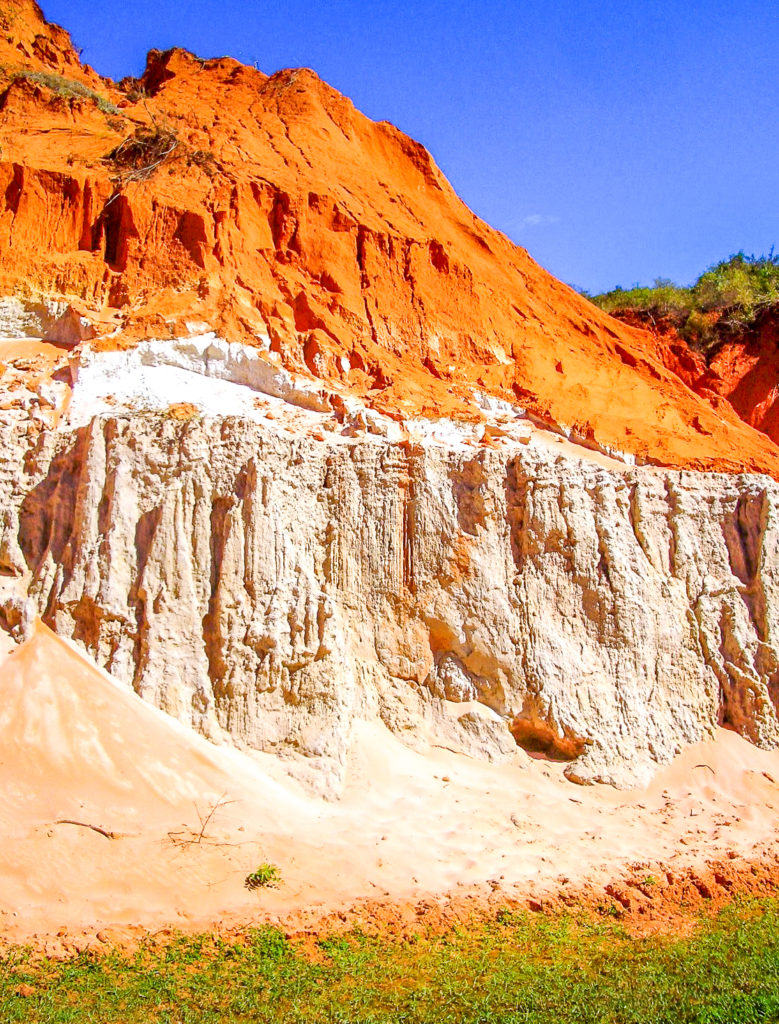
Deep red rust hues
Gyeongbokgung Palace, Korea
Gyeongbokgung Palace is one of the most well known and visited attractions in Seoul. The palace was built in 1395 by King Taejo as the royal palace for the Joseon dynasty, when the capital of the kingdom was moved to Seoul. The palace complex had a tumultuous history – it was burned and destroyed during the Japanese invasions in the 1590s, finally rebuilt in the mid 1800s, only for it to be dismantled again when the Japanese invaded and occupied Korea yet again. Most of what exists today has been rebuilt or restored after the Japanese occupation ended post WW-II.
This sprawling palace complex is a collection of royal residences, pavilions and treasures that truly warrants a whole day to explore fully. For a glimpse into Koreas cultural past and culture, make sure you step into both the National Palace Museum, as well as the National Folk Museum – both of which are located within the palace complex.
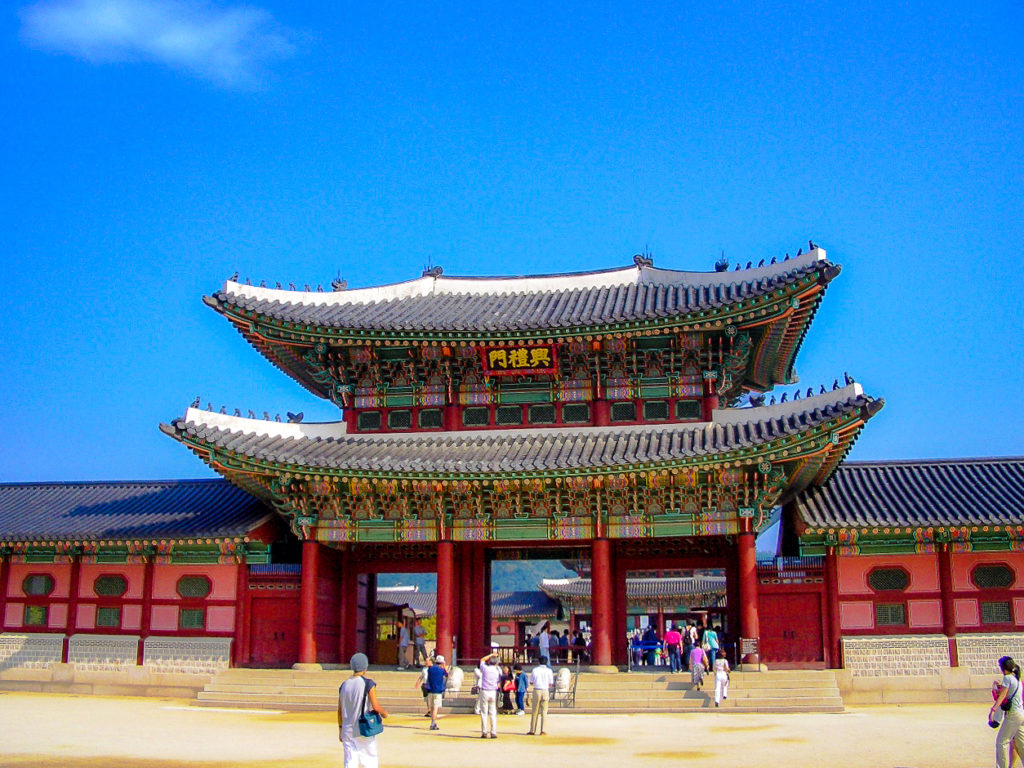
The main Heungnyemun Gate entrance
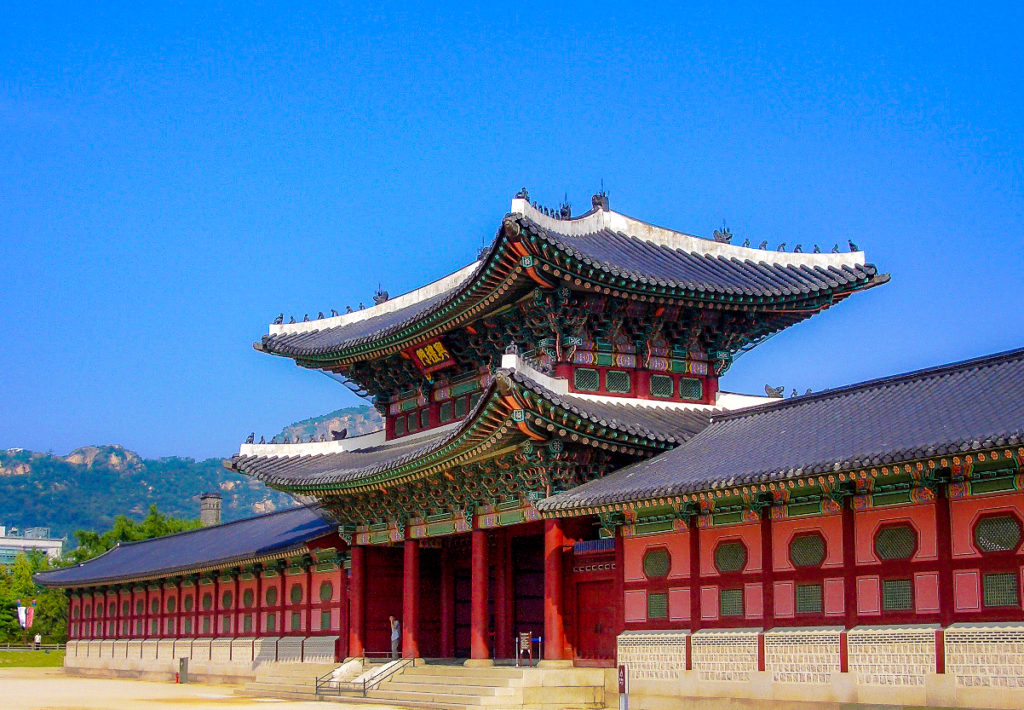
Heungnyemun Gate against the backdrop of Mt Bukhaksan
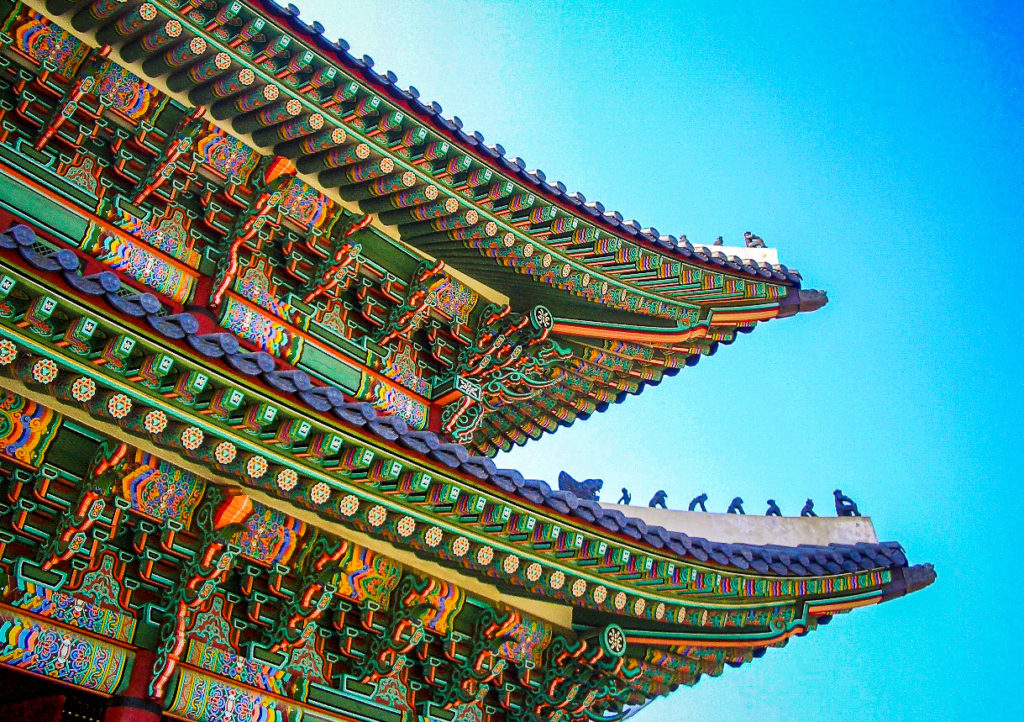
Multicolored decorations on the roof of the gate
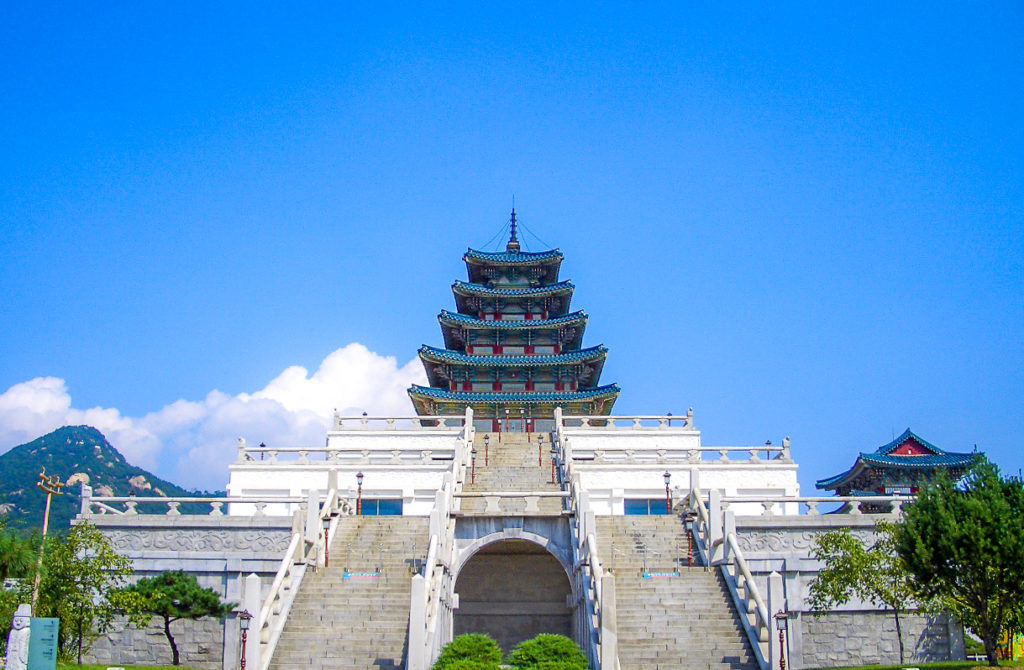
National Folk Museum building within the Palace complex

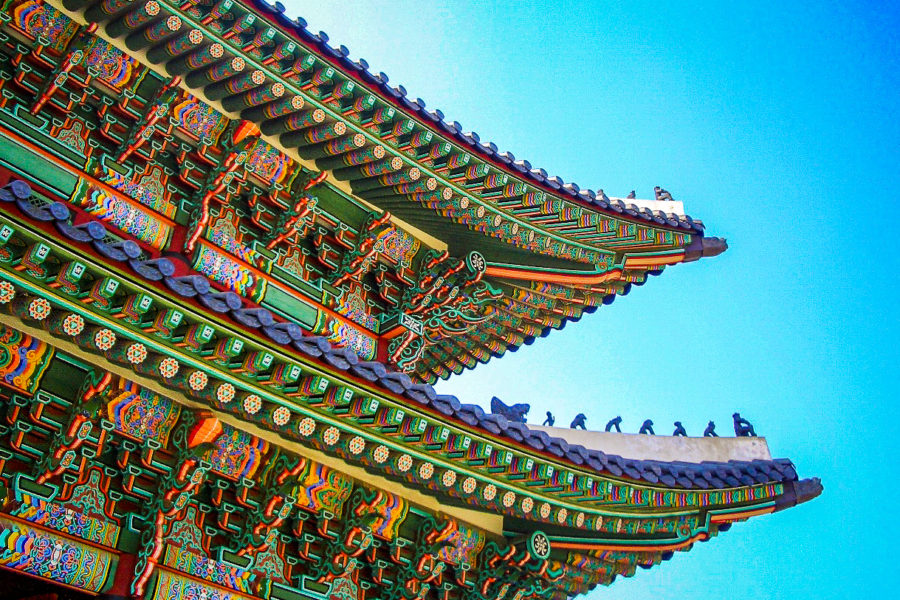
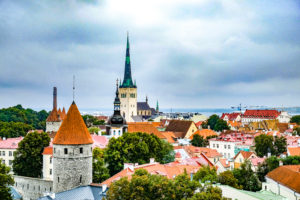
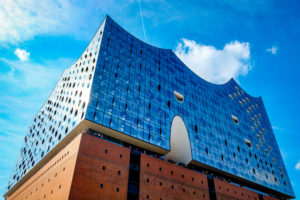
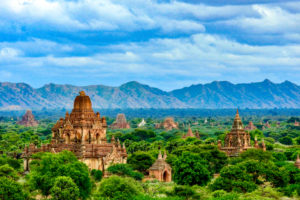




Leave a Reply
Please share your comments below!